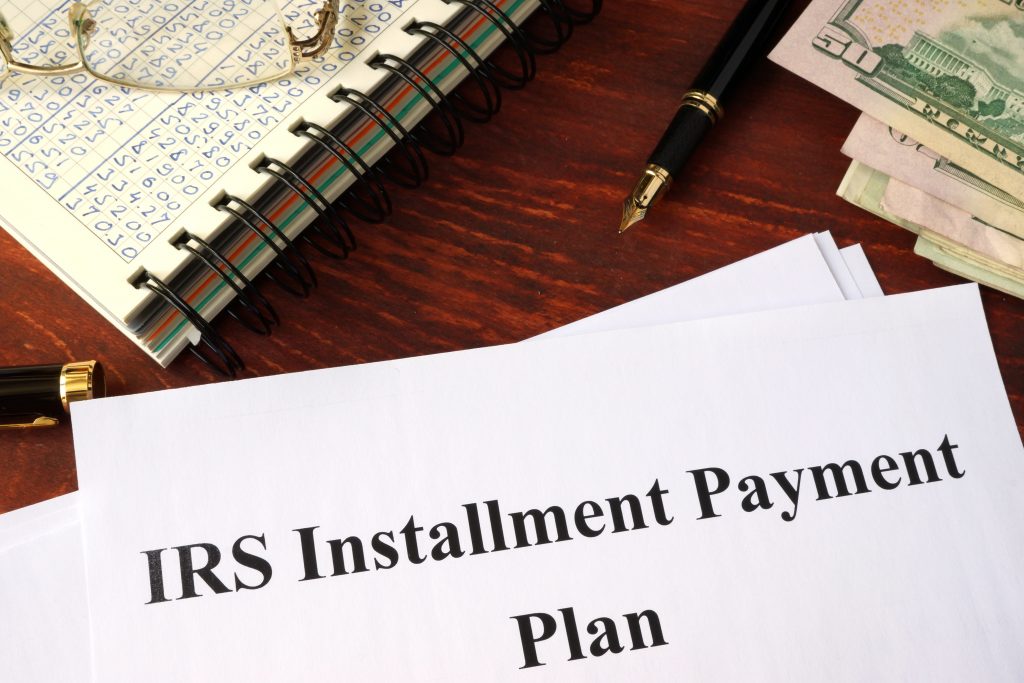How to Set Up a Payment Plan with the IRS
Life is full of certainties: the sun will rise, the tides will change, and taxes must be paid. The latter, albeit less poetic, is an inescapable part of adulthood. The conclusion of tax season can occasionally bring an unwelcome surprise—an imposing bill from the IRS. But don’t despair: believe it or not, the IRS offers solutions to help taxpayers manage their liabilities without wrecking their finances, and one of these tools is a payment plan. If you’re wondering how to set up a payment plan with the IRS, then you’re in luck!
This guide aims to provide a thorough understanding of how to set up a payment plan with the IRS, so you can manage your debt with confidence and ease. Let’s break it down together.
IRS Payment Plan Types

The IRS offers a variety of adaptable payment plans, each designed for specific situations. Choosing the right one is important when it comes to managing your tax obligations effectively. It should fit your unique circumstance and financial capabilities. They include:
Short-Term Payment Plan: This option is for taxpayers who can pay off their debt within 180 days or less. There is no setup fee, making it an attractive option if you can afford to clear your debt quickly.
Long-Term Payment Plan (Installment Agreement): If you owe a larger amount and need more than 180 days to pay, this is the option for you. Be aware that a setup fee applies, but this can be minimized if you opt to pay via direct debit.
Partial Payment Installment Agreement (PPIA): If your financial situation means you cannot afford to pay off your full tax debt, a PPIA may be the solution. This plan allows you to make smaller monthly payments, calculated according to your disposable income after necessary living expenses.
If you’re not sure which payment plan to go with, let IRS Shield step in and provide expert advice to help you select the most suitable plan.
Eligibility and Preparations
Now, the first stop on our journey of learning how to set up a payment plan with the IRS is confirming your eligibility. To apply online, individuals must owe less than $50,000 in tax, penalties, and interest (for a long-term payment plan), while businesses must owe $25,000 or less.
Once you’ve verified your eligibility, it’s time to prepare. Gather your essential information such as:
- Your Social Security Number or Individual Taxpayer Identification Number (ITIN)
- Your filing status and address from your most recent tax return
- Your employer’s details, including name, address, and phone number
- If planning to pay via direct debit, your bank account number and routing number
With this information in hand, you’re ready for the next phase: the application process.
How to Set Up a Payment Plan with the IRS: The Options
The IRS offers three main methods for setting up a payment plan: online, by phone, or by mail.
Online: The IRS’s Online Payment Agreement tool is the most efficient and convenient way to set up a payment plan. You just need to follow the prompts to complete the process.
By phone: If you’re more comfortable with direct conversation, setting up a payment plan over the phone might be the best route. Be prepared to hold the line, though, as wait times can vary. After discussing your financial situation and tax debt, they’ll help you choose a payment plan. You’ll provide your bank account details over the phone, and the IRS representative will guide you through the rest of the process.
By mail: If you’re a fan of traditional methods, the IRS accepts payment plan requests via mail. Download and print Form 9465, the Installment Agreement Request form, from the IRS website. Complete the form and mail it to the IRS at the address listed on the form. The IRS will review your request and send you a notice to confirm your payment plan.
Setting Your Payment Terms
When you start the application process, one of your main tasks is to decide on your monthly payment amount and when it should be due. This important step needs careful thought, balancing how much you owe in taxes with how much you can comfortably pay each month.
Choosing your payment due date is also a key decision. It’s a good idea to set it around the time you get paid, so you know you’ll have the money in your account when it’s time to pay.
Maintaining Your Payment Plan
Once your payment plan is in place, the key is staying on top of your payments. It’s not just about setting up the plan; it’s about keeping it going. It’s just like paying any bill: consistency counts. Missing a payment could lead to penalties, higher interest rates, and even cancellation of your plan.
Dealing with Changes in Financial Circumstances

Life isn’t static. Your financial situation today might not be the same as it will be six months or a year from now. Job loss, medical emergencies, or other unforeseen expenses can hit your budget and affect your ability to make your agreed payments.
If this happens, contact the IRS as soon as possible to inform them of your situation. They’re more understanding than you might think. You might be able to renegotiate the terms of your payment plan, or possibly switch to a different type of payment plan. Other options, such as an Offer in Compromise or Currently Not Collectible status, might also be available to you.
Remember, the goal is to manage your tax obligations without causing undue financial stress, and the IRS is usually willing to work with you toward that end.
Conclusion
Few things weigh as heavily on the mind as tax debt. That’s why it’s vital that you know how to set up a payment plan with the IRS, and that you understand the best option for your situation. We recommend letting IRS Shield guide you through this process, helping you choose and get set up on the best plan for your needs. With IRS Shield by your side, you can be confident that your financial future is secure.

